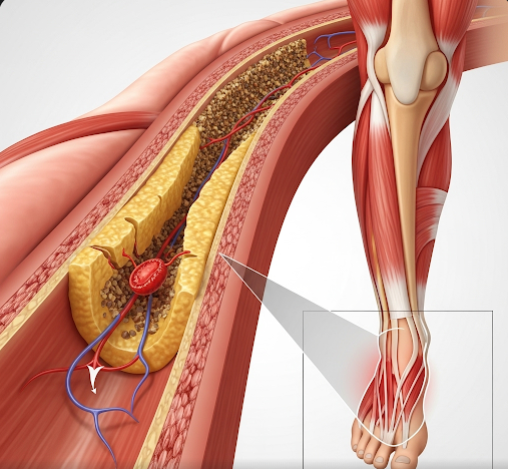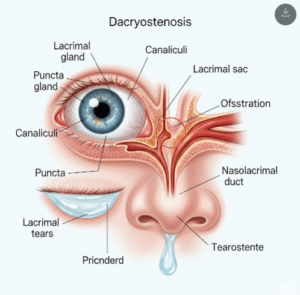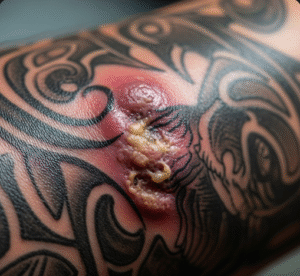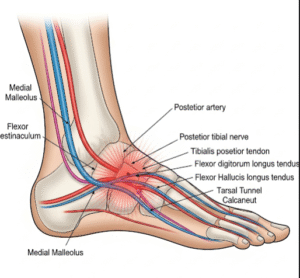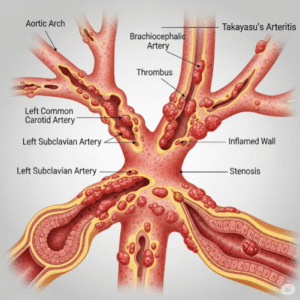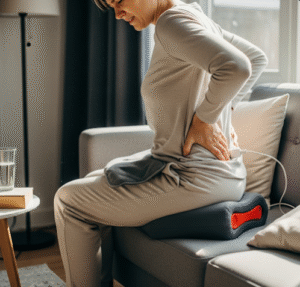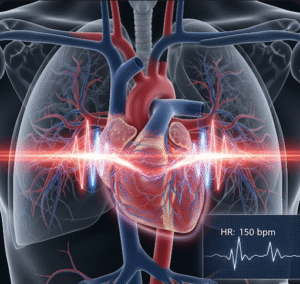Overview
Peripheral vascular disease (PVD) is a circulatory condition in which narrowed or blocked blood vessels reduce blood flow to the limbs, usually the legs. It most often results from atherosclerosis, the buildup of fatty deposits in the arteries. PVD can cause pain, numbness, and mobility problems, and in severe cases, it can lead to tissue death and amputation. Early diagnosis and treatment are essential to improve circulation and prevent serious complications.
What is Peripheral Vascular Disease?
Peripheral vascular disease refers to disorders of blood vessels outside the heart and brain, including arteries, veins, and lymphatic vessels. In most cases, PVD involves narrowing of arteries (peripheral artery disease, PAD), reducing oxygen-rich blood supply to the limbs. The condition is progressive but can be managed effectively with lifestyle changes, medications, and advanced treatments available in South Korea.
Symptoms
- Leg pain or cramping (claudication) during walking or exercise, relieved by rest
- Numbness or weakness in the legs
- Coldness in the lower leg or foot compared to the other side
- Sores on toes, feet, or legs that heal slowly or not at all
- Change in leg color or shiny skin
- Weak or absent pulse in the legs or feet
- In advanced cases, gangrene (tissue death)
Causes
- Atherosclerosis – Plaque buildup in artery walls
- Blood clots – Can block or narrow vessels
- Inflammation of blood vessels (vasculitis)
- Injury to limbs that damages vessels
- Diabetes – Damages blood vessels and impairs healing
- Smoking – Damages vessel lining and accelerates plaque buildup
Risk Factors
- Smoking (major risk factor)
- Diabetes
- High blood pressure (hypertension)
- High cholesterol
- Age over 50
- Obesity
- Sedentary lifestyle
- Family history of heart disease or stroke
Complications
If untreated, peripheral vascular disease can lead to:
- Critical limb ischemia (severe blockage causing pain at rest and non-healing wounds)
- Amputation due to tissue death
- Increased risk of heart attack and stroke
- Severe infections in the legs or feet
- Reduced mobility and quality of life
Prevention
- Quit smoking to protect blood vessel health
- Maintain a healthy diet low in saturated fats and cholesterol
- Exercise regularly to improve circulation
- Control blood pressure, blood sugar, and cholesterol levels
- Maintain a healthy body weight
- Get regular check-ups if at risk
Treatment Options in Korea
South Korea offers state-of-the-art care for peripheral vascular disease, focusing on restoring blood flow and preventing complications:
- Lifestyle modifications – Smoking cessation programs, diet counseling, and supervised exercise therapy
- Medications – Antiplatelet agents (aspirin, clopidogrel), cholesterol-lowering drugs (statins), and medications to improve blood flow
- Minimally invasive procedures –
- Angioplasty – A balloon is used to open narrowed arteries, often with stent placement
- Atherectomy – Removal of plaque from artery walls
- Bypass surgery – Creating an alternate route for blood flow using a graft
- Wound care programs – Specialized treatment for ulcers and non-healing wounds
- Advanced imaging – CT angiography, Doppler ultrasound, and MR angiography for precise diagnosis
- Rehabilitation services – Korean vascular clinics offer structured walking programs to improve mobility

